Featured
- Reset filters
- 48 results
- (-) Urban Energy
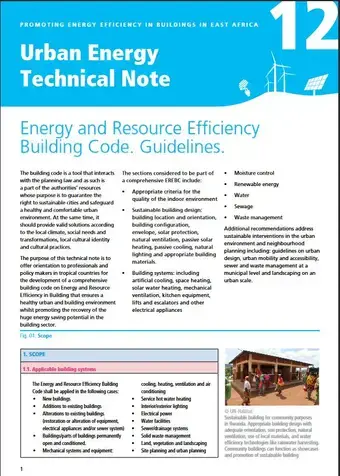
Brief
Urban Energy Technical Note 12: Energy and Resource Efficiency Building Code. Guidelines
2015
The building code is a tool that interacts with the planning law and as such is a part of the authorities’ resources whose purpose is to guarantee the right to sustainable cities and safeguard a healthy and comfortable urban environment. At the same time, it should provide valid solutions according to the local climate, social needs and transformations, local cultural identity and cultural practices.
Read now
Learn more
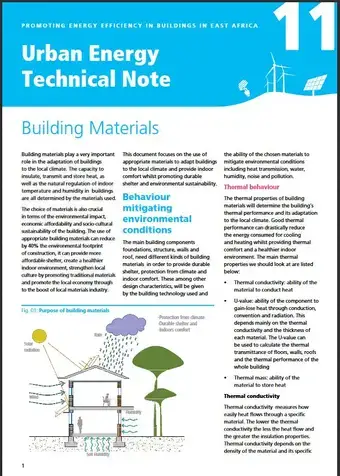
Brief
Urban Energy Technical Note 11: Building Materials
2015
Building materials play a very important role in the adaptation of buildings to the local climate. The capacity to insulate, transmit and store heat, as well as the natural regulation of indoor temperature and humidity in buildings are all determined by the materials used.
Read now
Learn more
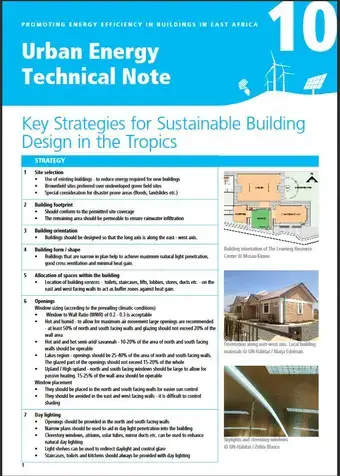
Brief
Urban Energy Technical Note 10: Key Strategies for Sustainable Building Design in the Tropics
2015
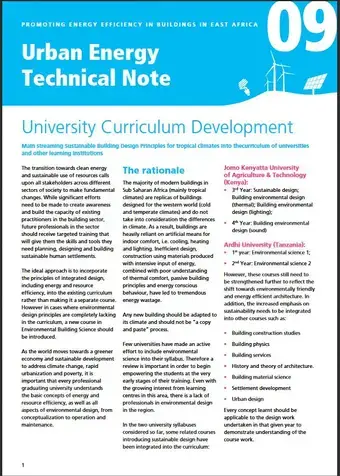
Brief
Urban Energy Technical Note 09: University Curriculum Development
2015
The transition towards clean energy and sustainable use of resources calls upon all stakeholders across different sectors of society to make fundamental changes. While significant efforts need to be made to create awareness and build the capacity of existing practitioners in the building sector, future professionals in the sector should receive targeted training that will give them the skills and tools they need planning, designing and building sustainable human settlements.
Read now
Learn more
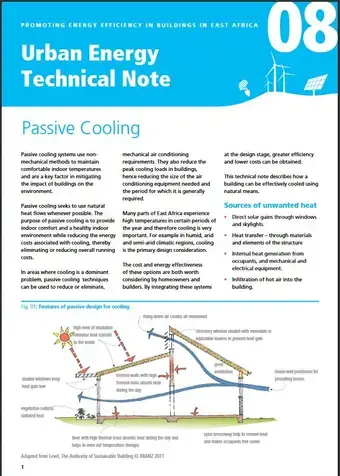
Brief
Urban Energy Technical Note 08: Passive Cooling
2015
Passive cooling systems use non-mechanical methods to maintain comfortable indoor temperatures and are a key factor in mitigating the impact of buildings on the environment.
Read now
Learn more
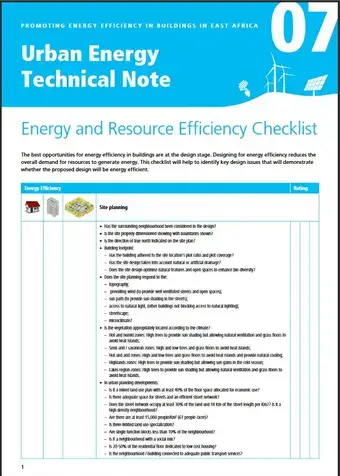
Brief
Urban Energy Technical Note 07: Energy and Resource Efficiency Checklist
2015
The best opportunities for energy efficiency in buildings are at the design stage. Designing for energy efficiency reduces the overall demand for resources to generate energy. This checklist will help to identify key design issues that will demonstrate whether the proposed design will be energy efficient.
Read now
Learn more
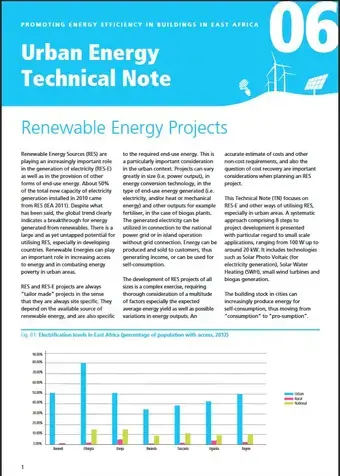
Brief
Urban Energy Technical Note 06: Renewable Energy Projects
2015
Renewable Energy Sources (RES) are playing an increasingly important role in the generation of electricity (RES-E) as well as in the provision of other forms of end-use energy. About 50% of the total new capacity of electricity generation installed in 2010 came from RES (IEA 2011). Despite what has been said, the global trend clearly indicates a breakthrough for energy generated from renewables. There is a large and as yet untapped potential for utilising RES, especially in developing countries…
Read now
Learn more
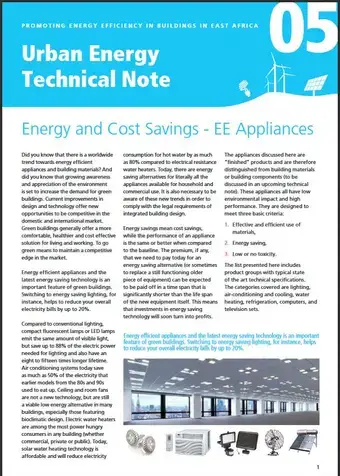
Brief
Urban Energy Technical Note 05: Energy and Cost Savings - EE Appliances
2015
Did you know that there is a worldwide trend towards energy efficient appliances and building materials? And did you know that growing awareness and appreciation of the environment is set to increase the demand for green buildings. Current improvements in design and technology offer new opportunities to be competitive in the domestic and international market. Green buildings generally offer a more comfortable, healthier and cost effective solution for living and working. To go green means to…
Read now
Learn more
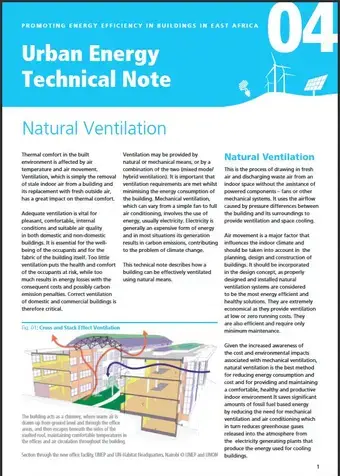
Brief
Urban Energy Technical Note 04: Natural Ventilation
2015
Thermal comfort in the built environment is affected by air temperature and air movement. Ventilation, which is simply the removal of stale indoor air from a building and its replacement with fresh outside air, has a great impact on thermal comfort.
Read now
Learn more
Document
HSP/EB.2024/INF.9- Results of the survey conducted by the secretariat following the third session of the Executive Board of 2023, to evaluate the effectiveness of that session so as to further improve the process and outcome of future sessions
发表于 四月 16th, 2024
Read now